The guinea pig (Cavia porcellus), also called the cavy or domestic guinea pig, is a species of rodent belonging to the family Caviidae and the genus Cavia. Despite their common name, these animals are not in the pig family, nor are they from Guinea. They originated in the Andes, and earlier studies based on biochemistry and hybridization suggested they are domesticated descendants of a closely related species of cavy such as Cavia aperea, C. fulgida, or C. tschudii and, therefore, do not exist naturally in the wild.[1][2] Recent studies applying molecular markers,[3][4] in addition to studying the skull and skeletal morphology of current and mummified animals,[5] revealed that the ancestor is most likely Cavia tschudii.
The domestic guinea pig plays an important role in the folk culture of many Indigenous South American groups, especially as a food source, but also in folk medicine and in community religious ceremonies.[6] Since the 1960s, efforts have been made to increase consumption of the animal outside South America.[7]
In Western societies, the domestic guinea pig has enjoyed widespread popularity as a household pet
since its introduction by European traders in the 16th century. Their
docile nature and responsiveness to handling and feeding, and the
relative ease of caring for them, continue to make guinea pigs a popular
pet. Organizations devoted to competitive breeding of guinea pigs have been formed worldwide, and many specialized breeds of guinea pig, with varying coat colors and compositions, are cultivated by breeders.
Biological experimentation on guinea pigs has been carried out since the 17th century. The animals were frequently used as model organisms in the 19th and 20th centuries, resulting in the epithet "guinea pig" for a test subject, but have since been largely replaced by other rodents such as mice and rats. They are still used in research, primarily as models for human medical conditions such as juvenile diabetes, tuberculosis, scurvy, and pregnancy complications.

History
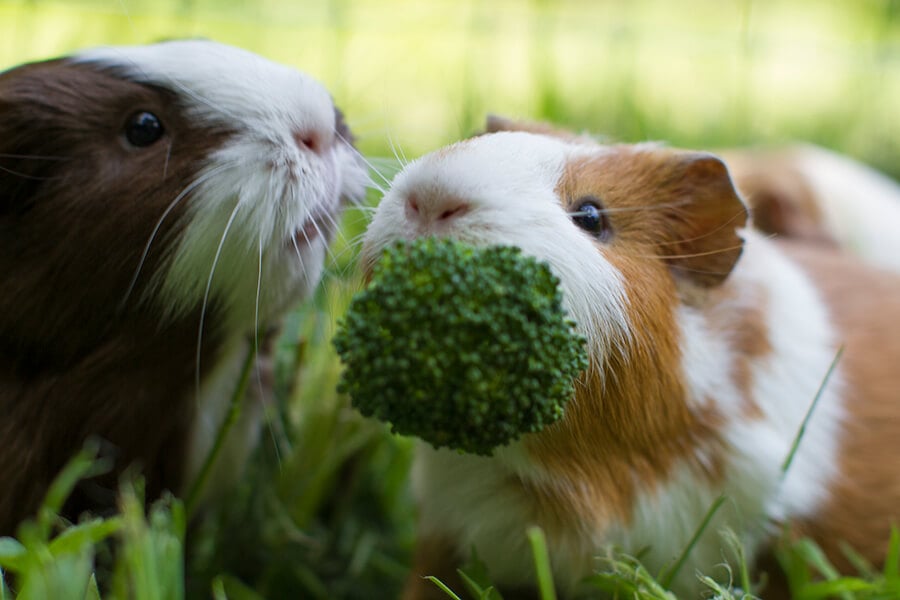
The guinea pig was first domesticated as early as 5000 BC for food by tribes in the Andean region of South America (the present-day southern part of Colombia, Ecuador, Peru, and Bolivia),[8] some thousands of years after the domestication of the South American camelids.[9] Statues dating from circa 500 BC to 500 AD that depict guinea pigs have been unearthed in archaeological digs in Peru and Ecuador.[10] The Moche people of ancient Peru worshipped animals and often depicted the guinea pig in their art.[11] From about 1200 AD to the Spanish conquest
in 1532, selective breeding resulted in many varieties of domestic
guinea pigs, which form the basis for some of the modern domestic
breeds.[12]
They continue to be a food source in the region; many households in the
Andean highlands raise the animal, which subsists on the family's
vegetable scraps.[13]
Folklore traditions involving guinea pigs are numerous; they are
exchanged as gifts, used in customary social and religious ceremonies,
and frequently referenced in spoken metaphors.[14] They also play a role in traditional healing rituals by folk doctors, or curanderos, who use the animals to diagnose diseases such as jaundice, rheumatism, arthritis, and typhus.[15] They are rubbed against the bodies of the sick, and are seen as a supernatural medium.[16] Black guinea pigs are considered especially useful for diagnoses.[17] The animal also may be cut open and its entrails examined to determine whether the cure was effective.[18] These methods are widely accepted in many parts of the Andes, where Western medicine is either unavailable or distrusted.[19]
Spanish, Dutch, and English traders brought guinea pigs to Europe, where they quickly became popular as exotic pets among the upper classes and royalty, including Queen Elizabeth I.[8] The earliest known written account of the guinea pig dates from 1547, in a description of the animal from Santo Domingo; because cavies are not native to Hispaniola, the animal was earlier believed to have been introduced there by Spanish travelers.[1]
However, based on more recent excavations on West Indian islands, the
animal must have been introduced by ceramic-making horticulturalists
from South America to the Caribbean around 500 BC,[20] and it was present in the Ostionoid period, for example, on Puerto Rico,[21] long before the advent of the Spaniards. The guinea pig was first described in the West in 1554 by the Swiss naturalist Conrad Gessner.[22] Its binomial scientific name was first used by Erxleben in 1777; it is an amalgam of Pallas' generic designation (1766) and Linnaeus' specific conferral (1758).[1] The earliest known illustration of a domestic guinea pig is a painting (artist unknown) in the collection of the National Portrait Gallery
in London, dated to 1580, which shows a girl in typical Elizabethan
dress holding a tortoise-shell guinea pig in her hands; she is flanked
by her two brothers, one of whom holds a pet bird.[23]
The picture dates from the same period as the oldest recorded guinea
pig remains in England, which are a partial cavy skeleton found at Hill Hall (Essex), an Elizabethan manor house, and dated to around 1575.[23]
Name
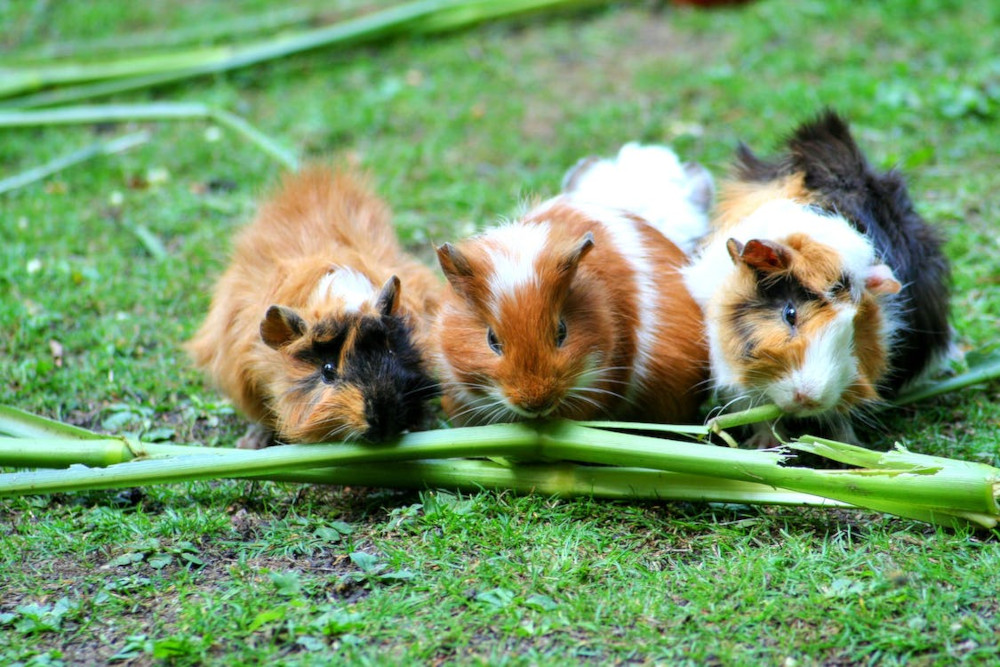
The scientific name of the common species is Cavia porcellus, with porcellus being Latin for "little pig". Cavia is New Latin; it is derived from cabiai, the animal's name in the language of the Galibi tribes once native to French Guiana.[24] Cabiai may be an adaptation of the Portuguese çavia (now savia), which is itself derived from the Tupi word saujá, meaning rat.[25] Guinea pigs are called quwi or jaca in Quechua and cuy or cuyo (plural cuyes, cuyos) in the Spanish of Ecuador, Peru, and Bolivia.[26] Ironically, breeders
tend to use the more formal "cavy" to describe the animal, while in
scientific and laboratory contexts, it is far more commonly referred to
by the more colloquial "guinea pig".[27]
How the animals came to be called "pigs" is not clear. They are built somewhat like pigs,
with large heads relative to their bodies, stout necks, and rounded
rumps with no tail of any consequence; some of the sounds they emit are
very similar to those made by pigs, and they also spend a large amount
of time eating.[27][28] They can survive for long periods in small quarters, like a 'pig pen', and were thus easily transported on ships to Europe.[27]
The animal's name alludes to pigs in many European languages. The German word for them is Meerschweinchen, literally "little sea pig", which has been translated into Polish as świnka morska, into Hungarian as tengerimalac, and into Russian as морская свинка. This derives from the Middle High German name merswin. This originally meant "dolphin" and was used because of the animals' grunting sounds (which were thought to be similar).[29]
Many other, possibly less scientifically based explanations of the
German name exist. For example, sailing ships stopping to reprovision in
the New World would pick up stores of guinea pigs, which provided an easily transportable source of fresh meat. The French term is cochon d'Inde (Indian pig) or cobaye; the Dutch call it Guinees biggetje (Guinean piglet) or cavia (while in some Dutch dialects it is called Spaanse rat); and in Portuguese, the guinea pig is variously referred to as cobaia, from the Tupi word via its Latinization, or as porquinho da Índia (little Indian pig). This is not universal; for example, the common word in Spanish is conejillo de Indias (little rabbit of the Indies).[26] The Chinese refer to them as 豚鼠 (túnshǔ, 'pig mouse'), and sometimes as Netherlands pig (荷蘭豬, hélánzhū) or Indian mouse (天竺鼠, tiānzhúshǔ). The Japanese word for guinea pig is "モルモット" (morumotto), which derives from the name of another mountain-dwelling rodent, the marmot; this is what guinea pigs were called by the Dutch traders who first brought them to Nagasaki in 1843.
The origin of "guinea" in "guinea pig" is harder to explain. One
proposed explanation is that the animals were brought to Europe by way
of Guinea, leading people to think they had originated there.[27]
"Guinea" was also frequently used in English to refer generally to any
far-off, unknown country, so the name may simply be a colorful reference
to the animal's exotic appeal.[30][31] Another hypothesis suggests the "guinea" in the name is a corruption of "Guiana", an area in South America, though the animals are not native to that region.[30][32] A common misconception is that they were so named because they were sold for the price of a guinea coin; this hypothesis is untenable, because the guinea was first struck in England in 1663, and William Harvey used the term "Ginny-pig" as early as 1653.[33] Others believe "guinea" may be an alteration of the word coney (rabbit); guinea pigs were referred to as "pig coneys" in Edward Topsell's 1607 treatise on quadrupeds.[27]
Traits and environment
In the 1990s, a minority scientific opinion emerged proposing that caviomorphs, such as guinea pigs, chinchillas, and degus, are not rodents and should be reclassified as a separate order of mammals (similar to lagomorphs).[37][38] Subsequent research using wider sampling has restored consensus among mammalian biologists that the current classification of rodents as monophyletic is justified.[39][40]
Natural habitat
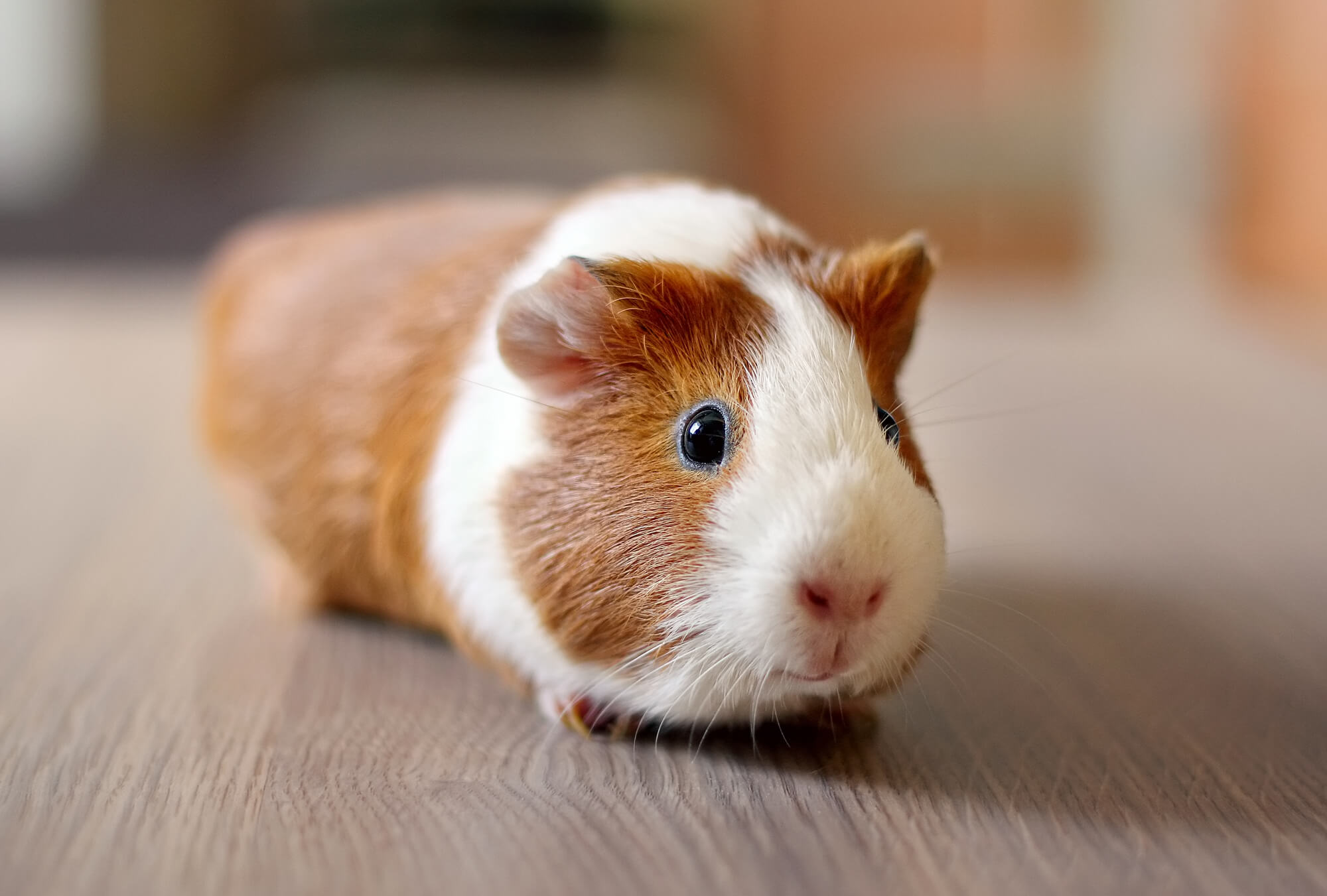
C. porcellus is not found naturally in the wild; it is likely descended from some closely related species of cavies, such as C. aperea, C. fulgida, and C. tschudii, which are still commonly found in various regions of South America.[1] Some species of cavy identified in the 20th century, such as C. anolaimae and C. guianae, may be domestic guinea pigs that have become feral by reintroduction into the wild.[12] Wild cavies are found on grassy plains and occupy an ecological niche similar to that of cattle.
They are social, living in the wild in small groups which consist of
several females (sows), a male (boar), and the young (which in a break
with the preceding porcine nomenclature are called pups). They move together in groups (herds) eating grass or other vegetation, and do not store food.[41] While they do not burrow or build nests, they frequently seek shelter in the burrows of other animals, as well as in crevices and tunnels formed by vegetation.[41] They tend to be most active during dawn and dusk, when it is harder for predators to spot them.[42]
Domestic habitat

Domesticated
guinea pigs thrive in groups of two or more; groups of sows, or groups
of one or more sows and a neutered boar are common combinations. Guinea
pigs learn to recognize and bond with other individual guinea pigs, and
testing of boars shows their neuroendocrine
stress response is significantly lowered in the presence of a bonded
female when compared to the presence of unfamiliar females.[43]
Groups of boars may also get along, provided their cage has enough
space, they are introduced at an early age, and no females are present.[44]
Domestic guinea pigs have developed a different biological rhythm from
their wild counterparts, and have longer periods of activity followed by
short periods of sleep in between.[42] Activity is scattered randomly over the day; aside from avoidance of intense light, no regular circadian patterns are apparent.[42]
Guinea pigs do not generally thrive when housed with other species. Housing of guinea pigs with other rodents such as gerbils and hamsters may increase instances of respiratory and other infections,[50] and such rodents may act aggressively toward the guinea pig.[51] Larger animals may regard guinea pigs as prey, though some (such as dogs) can be trained to accept them.[52] Opinion is divided over the cohousing of guinea pigs and domestic rabbits. Some published sources say that guinea pigs and rabbits complement each other well when sharing a cage.[52][53] However, as lagomorphs, rabbits have different nutritional requirements, so the two species cannot be fed the same food.[54] Rabbits may also harbor diseases (such as respiratory infections from Bordetella and Pasteurella), to which guinea pigs are susceptible.[55] Even the dwarf rabbit is much stronger than the guinea pig and may cause intentional or inadvertent injury.[56]
Behavior
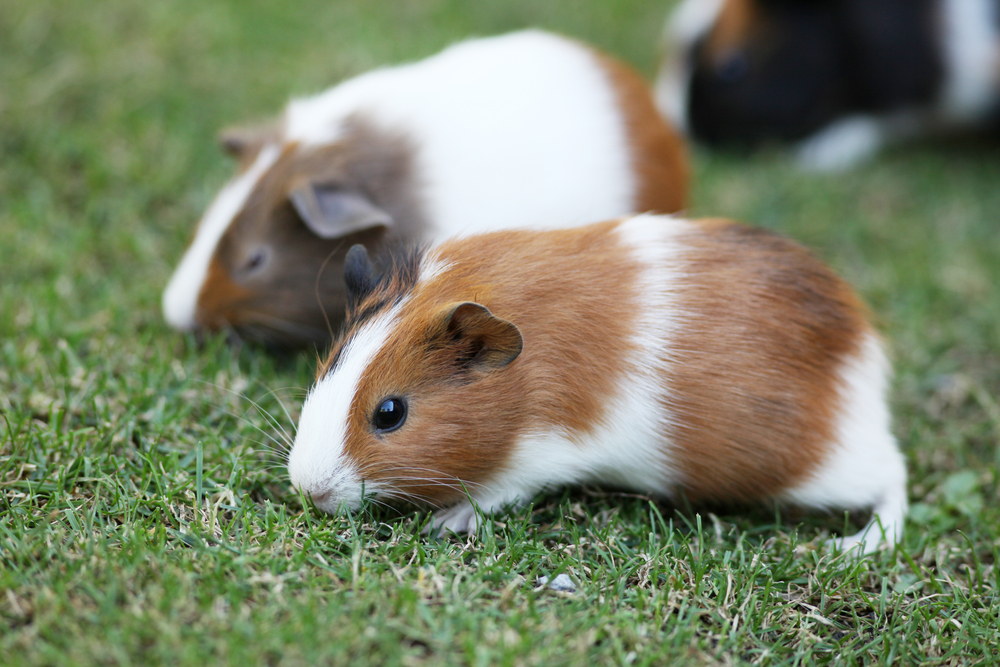
Guinea pigs can learn complex paths to food, and can accurately
remember a learned path for months. Their strongest problem-solving
strategy is motion.[57]
While guinea pigs can jump small obstacles, they are poor climbers, and
are not particularly agile. They startle extremely easily, and either
freeze in place for long periods or run for cover with rapid, darting
motions when they sense danger.[42] Larger groups of startled guinea pigs "stampede", running in haphazard directions as a means of confusing predators.[58]
When excited, guinea pigs may repeatedly perform little hops in the air
(known as "popcorning"), a movement analogous to the ferret's war dance.[59] They are also exceedingly good swimmers.[60]
Like many rodents, guinea pigs sometimes participate in social grooming, and they regularly self-groom.[61] A milky-white substance is secreted from their eyes and rubbed into the hair during the grooming process.[62]
Groups of boars often chew each other's hair, but this is a method of
establishing hierarchy within a group, rather than a social gesture.[60] Dominance is also established through biting (especially of the ears), piloerection, aggressive noises, head thrusts, and leaping attacks.[63] Non-sexual simulated mounting for dominance is also common among same-sex groups.
Guinea pig sight is not as good as that of a human, but they have a
wider angle of vision (about 340°) and see in partial color (dichromacy). They have well-developed senses of hearing, smell, and touch.[64][65] Vocalization is the primary means of communication between members of the species.[66] These are the most common sounds made by the guinea pig:[67]
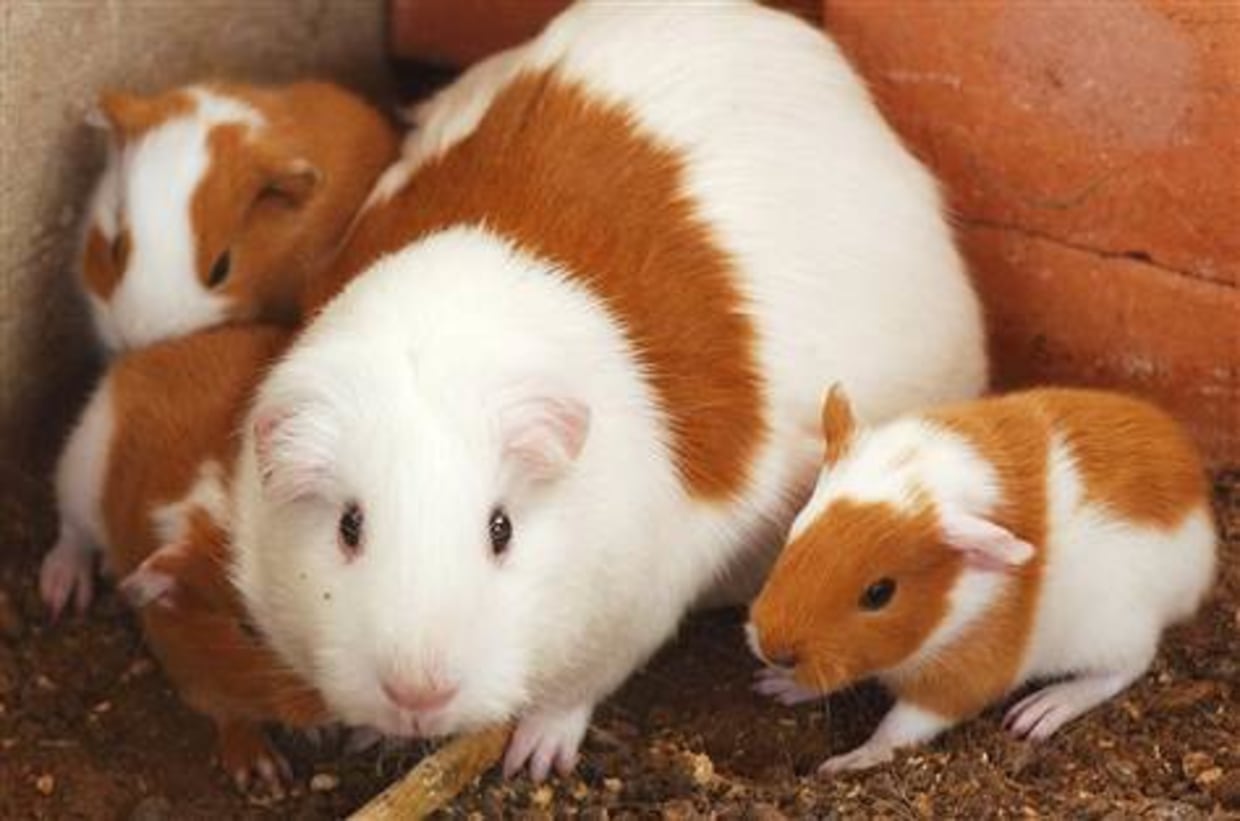
Breeding
In smaller litters, difficulties may occur during labour due to over-sized pups. Large litters result in higher incidences of stillbirth, but because the pups are delivered at an advanced stage of development, lack of access to the mother's milk has little effect on the mortality rate of newborns.[71] Cohabitating females assist in mothering duties if lactating.[72]
Guinea pigs also practice alloparental care, in which a female may adopt the pup or pups of another. This might take place if the original parents die or are for some reason separated from them. This behavior is common, and is seen in many other animal species such as the elephant.[73]
Male and female guinea pigs do not differ in external appearance apart from general size. The position of the anus is very close to the genitals in both sexes. Female genitals are distinguished by a Y-shaped configuration formed from a vulvar flap, while the male genitals may look similar, with the penis and anus forming a like shape, the penis will protrude if pressure is applied to the surrounding hair.[74] The male's testes may also be visible externally from scrotal swelling.
Toxemia of pregnancy is common and kills many pregnant females. Signs of toxemia include anorexia, lack of energy, excessive salivation, a sweet or fruity breath odor due to ketones, and seizures in advanced cases.[80] Pregnancy toxemia appears to be most common in hot climates.[81] Other serious complications of pregnancy can include a prolapsed uterus, hypocalcaemia, and mastitis.[82]
Diet
Guinea pigs benefit from feeding on fresh grass hay, such as timothy hay, in addition to food pellets which are often based from timothy. Alfalfa is also a popular food choice; most guinea pigs will eat large amounts of alfalfa when offered it,[13][88] though some controversy exists over the feeding of alfalfa to adult guinea pigs. Some pet owners and veterinary organizations have advised that, as a legume rather than a grass hay, alfalfa consumed in large amounts may lead to obesity, as well as bladder stones due to excess calcium, in any but pregnant and very young guinea pigs.[89][90] However, published scientific sources mention alfalfa as a source for replenishment of protein, amino acids, and fiber.[91][92][93]
Like humans, but unlike most other mammals, guinea pigs cannot synthesize their own vitamin C and must obtain this vital nutrient from food. If guinea pigs do not ingest enough vitamin C, they can suffer from potentially fatal scurvy. Guinea pigs require about 10 mg of vitamin C daily (20 mg if pregnant), which can be obtained through fresh, raw fruits and vegetables (such as broccoli, apple, cabbage, carrot, celery, and spinach) or through dietary supplements.[94] Healthy diets for guinea pigs require a complex balance of calcium, magnesium, phosphorus, potassium, and hydrogen ions; adequate amounts of vitamins E, A, and D are also necessary.[95] Imbalanced diets have been associated with muscular dystrophy, metastatic calcification, difficulties with pregnancy, vitamin deficiencies, and teeth problems.[96][97] Guinea pigs tend to be fickle eaters when it comes to fresh fruits and vegetables, having learned early in life what is and is not appropriate to consume, and their habits are difficult to change after maturity.[92][98] They do not respond well to sudden changes in diet; they may stop eating and starve rather than accept new food types.[60] A constant supply of hay or other food is generally recommended, as guinea pigs feed continuously and may develop habits such as chewing on their own hair if food is not present.[99] Because guinea pigs' teeth grow constantly, they routinely gnaw, lest their teeth become too large for their mouths, a common problem in rodents.[46] Guinea pigs also chew on cloth, paper, plastic, and rubber.
A number of plants are poisonous to guinea pigs, including bracken, bryony, buttercup, charlock, deadly nightshade, foxglove, hellebore, hemlock, lily of the valley, mayweed, monkshood, privet, ragwort, rhubarb, speedwell, toadflax (both Linaria vulgaris and Linaria dalmatica), and wild celery.[100] Additionally, any plant which grows from a bulb (e.g., tulip or onion) is normally considered poisonous,[101] as well as ivy and oak tree leaves.
Health
Common ailments in domestic guinea pigs include respiratory tract infections, diarrhea, scurvy (vitamin C deficiency, typically characterized by sluggishness), abscesses due to infection (often in the neck, due to hay embedded in the throat, or from external scratches), and infections by lice, mites, or fungus.[102]
Mange mites (Trixacarus caviae) are a common cause of hair
loss, and other symptoms may also include excessive scratching,
unusually aggressive behavior when touched (due to pain), and, in some
instances, seizures.[103] Guinea pigs may also suffer from "running lice" (Gliricola porcelli),
a small, white insect which can be seen moving through the hair; their
eggs, which appear as black or white specks attached to the hair, are
sometimes referred to as "static lice". Other causes of hair loss can be
due to hormonal upsets caused by underlying medical conditions such as ovarian cysts.[104]
Foreign bodies, especially small pieces of hay or straw, can become
lodged in the eyes of guinea pigs, resulting in excessive blinking,
tearing, and in some cases an opaque film over the eye due to corneal ulcer.[105] Hay or straw dust can also cause sneezing. While it is normal for guinea pigs to sneeze periodically, frequent sneezing may be a symptom of pneumonia, especially in response to atmospheric changes. Pneumonia may also be accompanied by torticollis and can be fatal.[106]
Because the guinea pig has a stout, compact body, it more easily tolerates excessive cold than excessive heat.[107] Its normal body temperature is 101–104 °F (38–40 °C),[108] so its ideal ambient air temperature range is similar to a human's, about 65–75 °F (18–24 °C).[107] Consistent ambient temperatures in excess of 90 °F (32 °C) have been linked to hyperthermia and death, especially among pregnant sows.[107] Guinea pigs are not well suited to environments that feature wind or frequent drafts,[109] and respond poorly to extremes of humidity outside of the range of 30–70%.[110]
Guinea pigs are prey
animals whose survival instinct is to mask pain and signs of illness,
and many times health problems may not be apparent until a condition is
severe or in its advanced stages. Treatment of disease is made more
difficult by the extreme sensitivity guinea pigs have to most antibiotics, including penicillin, which kill off the intestinal flora and quickly bring on episodes of diarrhea and in some cases, death.[111][112]
Similar to the inherited genetic diseases of other breeds of animal (such as hip dysplasia in canines), a number of genetic abnormalities of guinea pigs have been reported. Most commonly, the roan coloration of Abyssinian guinea pigs is associated with congenital eye disorders and problems with the digestive system.[113] Other genetic disorders include "waltzing disease" (deafness coupled with a tendency to run in circles), palsy, and tremor conditions.[114]
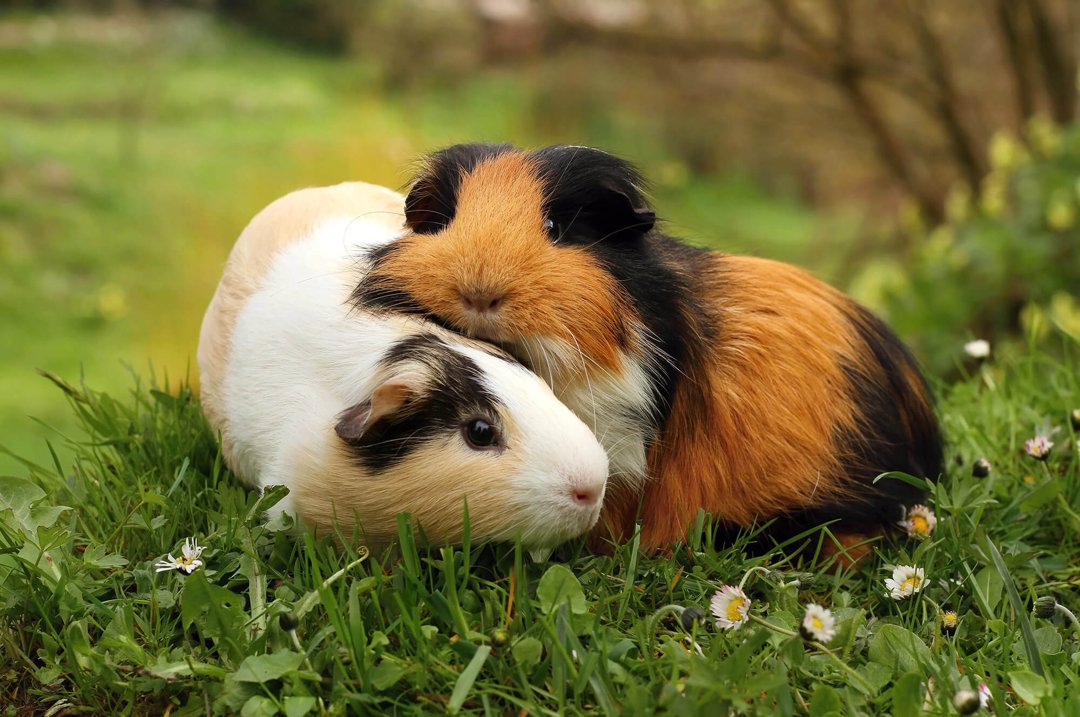
If handled correctly early in life, guinea pigs become amenable to being picked up and carried, and seldom bite or scratch.[60] They are timid explorers and often hesitate to attempt an escape from their cage even when an opportunity presents itself.[53] Still, they show considerable curiosity when allowed to walk freely, especially in familiar and safe terrain. Guinea pigs that become familiar with their owner will whistle on the owner's approach; they will also learn to whistle in response to the rustling of plastic bags or the opening of refrigerator doors, where their food is most commonly stored. In Switzerland, owning a single guinea pig is considered harmful to its well-being and forbidden by law.[115]
Appearance, coat and grooming
Clubs and associations
Cavy clubs and associations dedicated to the showing and breeding of
guinea pigs have been established worldwide. The American Cavy Breeders
Association, an adjunct to the American Rabbit Breeders' Association, is the governing body in the United States and Canada.[117] The British Cavy Council governs cavy clubs in the United Kingdom. Similar organizations exist in Australia (Australian National Cavy Council)[118] and New Zealand (New Zealand Cavy Council).[119] Each club publishes its own standard of perfection and determines which breeds are eligible for showing.
Cultural and media influence
The use of guinea pigs in scientific experimentation dates back at least to the 17th century, when the Italian biologists Marcello Malpighi and Carlo Fracassati conducted vivisections of guinea pigs in their examinations of anatomic structures.[132] In 1780, Antoine Lavoisier used a guinea pig in his experiments with the calorimeter,
a device used to measure heat production. The heat from the guinea
pig's respiration melted snow surrounding the calorimeter, showing that
respiratory gas exchange is a combustion, similar to a candle burning.[133] Guinea pigs played a major role in the establishment of germ theory in the late 19th century, through the experiments of Louis Pasteur, Émile Roux, and Robert Koch.[134] Guinea pigs have been launched into orbital space flight several times, first by the USSR on the Sputnik 9 biosatellite of March 9, 1961 – with a successful recovery.[135] China also launched and recovered a biosatellite in 1990 which included guinea pigs as passengers.[136]
In English,
the term 'guinea pig' is commonly used as a metaphor for a subject of
scientific experimentation, or any experiment or test in modern times.
This dates back to the early 20th century; the Oxford English Dictionary notes its first usage in this capacity in 1913.[137] In 1933, Consumers Research founders F. J. Schlink and Arthur Kallet wrote a book entitled 100,000,000 Guinea Pigs, extending the metaphor to consumer society.[138] The book became a national bestseller in the United States, thus further popularizing the term, and spurred the growth of the consumer protection movement.[139] The negative connotation of the term was later employed in the novel The Guinea Pigs by Czech author Ludvík Vaculík as an allegory for Soviet totalitarianism.[140]
Guinea pigs were popular laboratory animals until the later 20th
century; about 2.5 million guinea pigs were used annually in the U.S.
for research in the 1960s,[141] but that total decreased to about 375,000 by the mid-1990s.[60] As of 2007, they constitute about 2% of the current total of laboratory animals.[141] In the past, they were widely used to standardize vaccines and antiviral agents; they were also often employed in studies on the production of antibodies in response to extreme allergic reactions, or anaphylaxis.[142] Less common uses included research in pharmacology and irradiation.[142]
Since the middle 20th century, they have been replaced in laboratory
contexts primarily by mice and rats. This is in part because research
into the genetics of guinea pigs has lagged behind that of other
rodents, although geneticists W. E. Castle and Sewall Wright made a number of contributions to this area of study, especially regarding coat color.[114][143] In 2004, the U.S.'s National Human Genome Research Institute announced plans to sequence the genome of the domestic guinea pig.[144]

The guinea pig was most extensively implemented in research and diagnosis of infectious diseases.[142] Common uses included identification of brucellosis, Chagas disease, cholera, diphtheria, foot-and-mouth disease, glanders, Q fever, Rocky Mountain spotted fever, and various strains of typhus.[142] They are still frequently used to diagnose tuberculosis, since they are easily infected by human tuberculosis bacteria.[141] Because guinea pigs are one of the few animals which, like humans and other primates, cannot synthesize vitamin C, but must obtain it from their diet, they are ideal for researching scurvy.[141]
From the accidental discovery in 1907 that scurvy could be induced in
guinea pigs, to their use to prove the chemical structure of the
"ascorbutic factor" in 1932, the guinea pig model proved a crucial part
of vitamin C research.[145][146]
Complement, an important component for serology, was first isolated from the blood of the guinea pig.[141] Guinea pigs have an unusual insulin mutation,[147] and are a suitable species for the generation of anti-insulin antibodies.[148]
Present at a level 10 times that found in other mammals, the insulin in
guinea pigs may be important in growth regulation, a role usually
played by growth hormone.[149] Additionally, guinea pigs have been identified as model organisms for the study of juvenile diabetes and, because of the frequency of pregnancy toxemia, of pre-eclampsia in human females.[72]
Their placental structure is similar to that of humans, and their
gestation period can be divided into trimesters that resemble the stages
of fetal development in humans.[150]
Guinea pig strains
used in scientific research are primarily outbred strains. Aside from
the common American or English stock, the two main outbred strains in
laboratory use are the Hartley and Dunkin-Hartley; these English strains
are albino, although pigmented strains are also available.[151] Inbred strains
are less common and are usually used for very specific research, such
as immune system molecular biology. Of the inbred strains that have been
created, the two still used with any frequency are, following Sewall
Wright's designations, "Strain 2" and "Strain 13".[114][151]
Hairless breeds of guinea pigs have been used in scientific research since the 1980s, particularly for dermatological studies. A hairless and immunodeficient breed was the result of a spontaneous genetic mutation in inbred laboratory strains from the Hartley stock at the Eastman Kodak Company in 1979.[152] An immunocompetent hairless breed was also identified by the Institute Armand Frappier in 1978, and Charles River Laboratories has reproduced this breed for research since 1982.[153] Cavy fanciers then began acquiring hairless breeds, and the pet hairless varieties are referred to as "skinny pigs".
:strip_icc()/guinea-pigs-diet-4580376-hero-0aa5acb29b2941ff936e5598f595fbaf.jpg)



.jpg)

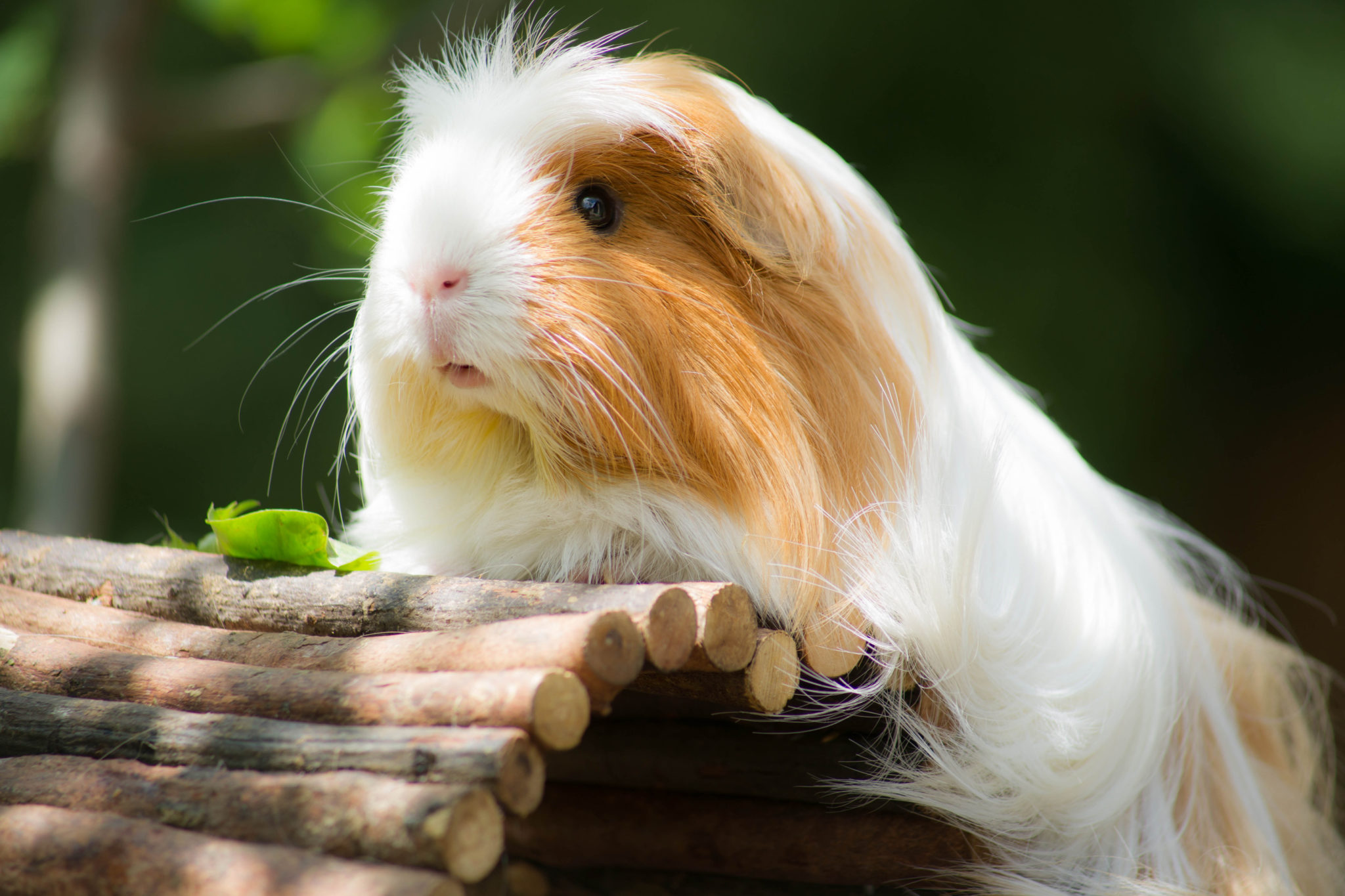
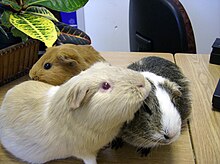


:strip_icc()/about-guinea-pigs-1238899-02-2c4747b6cf424932a4fb9a4c0295bdda.jpg)


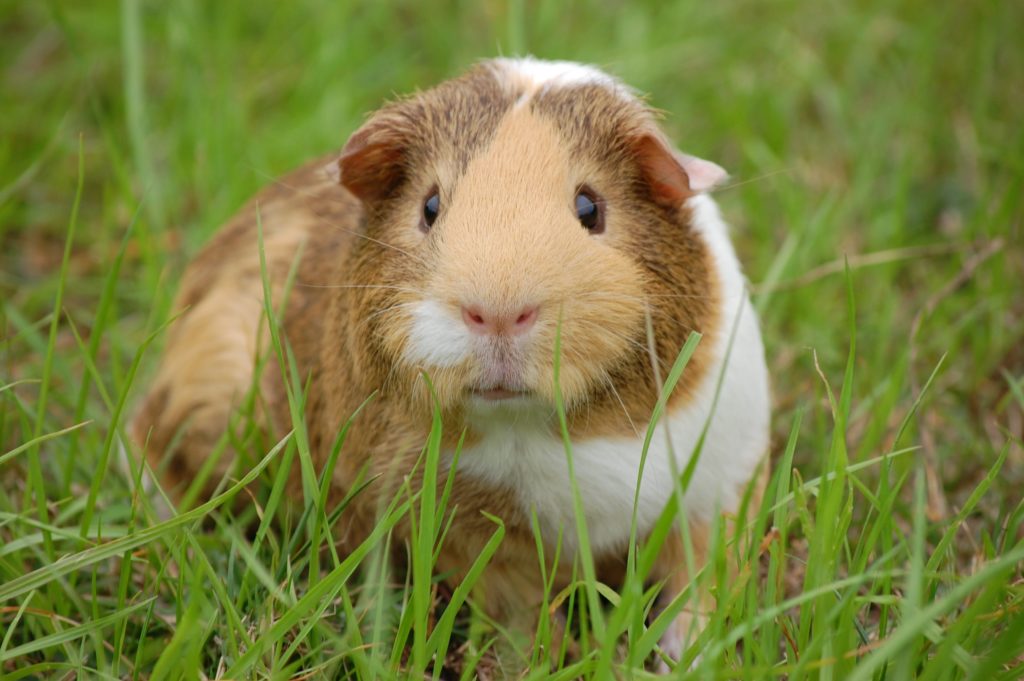



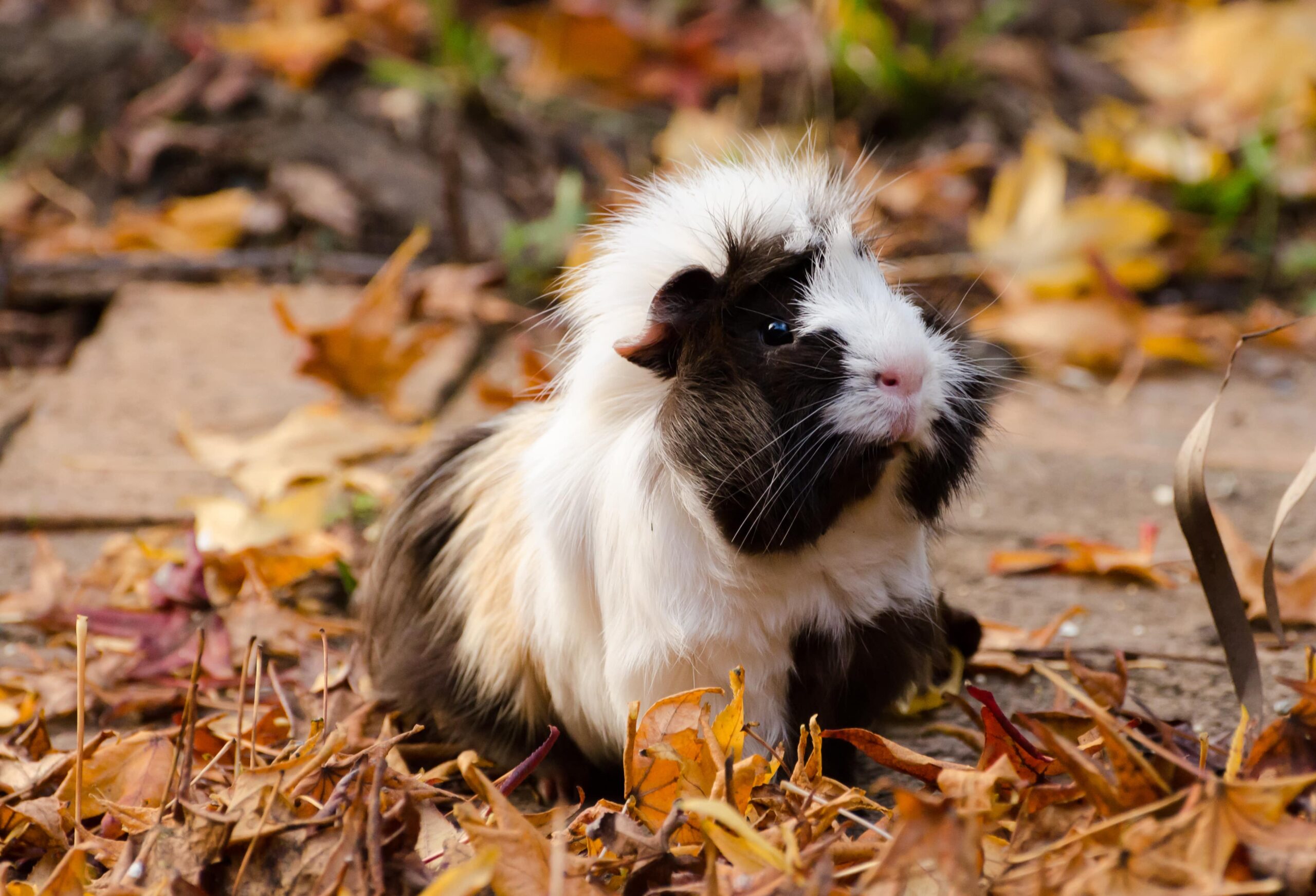
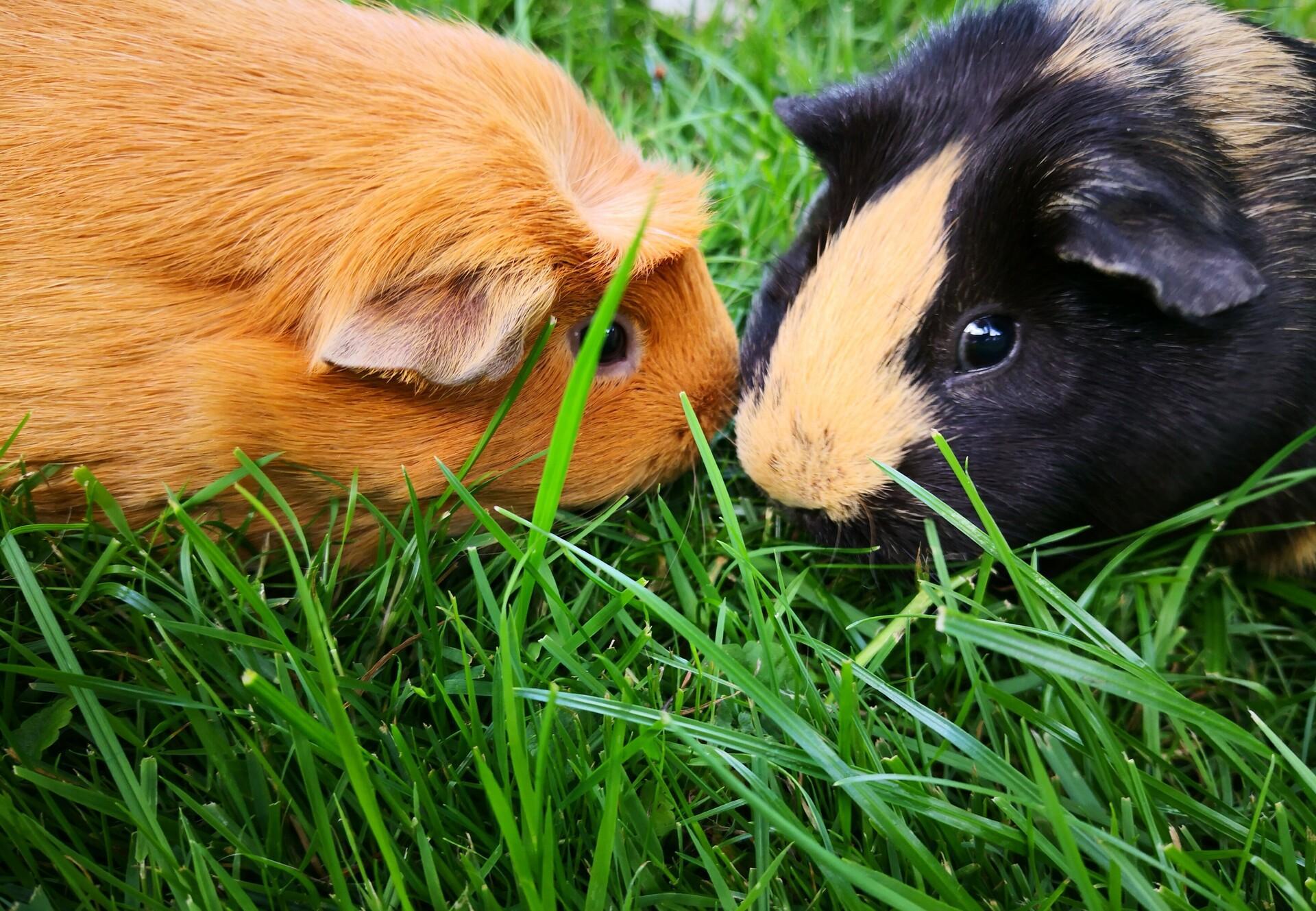


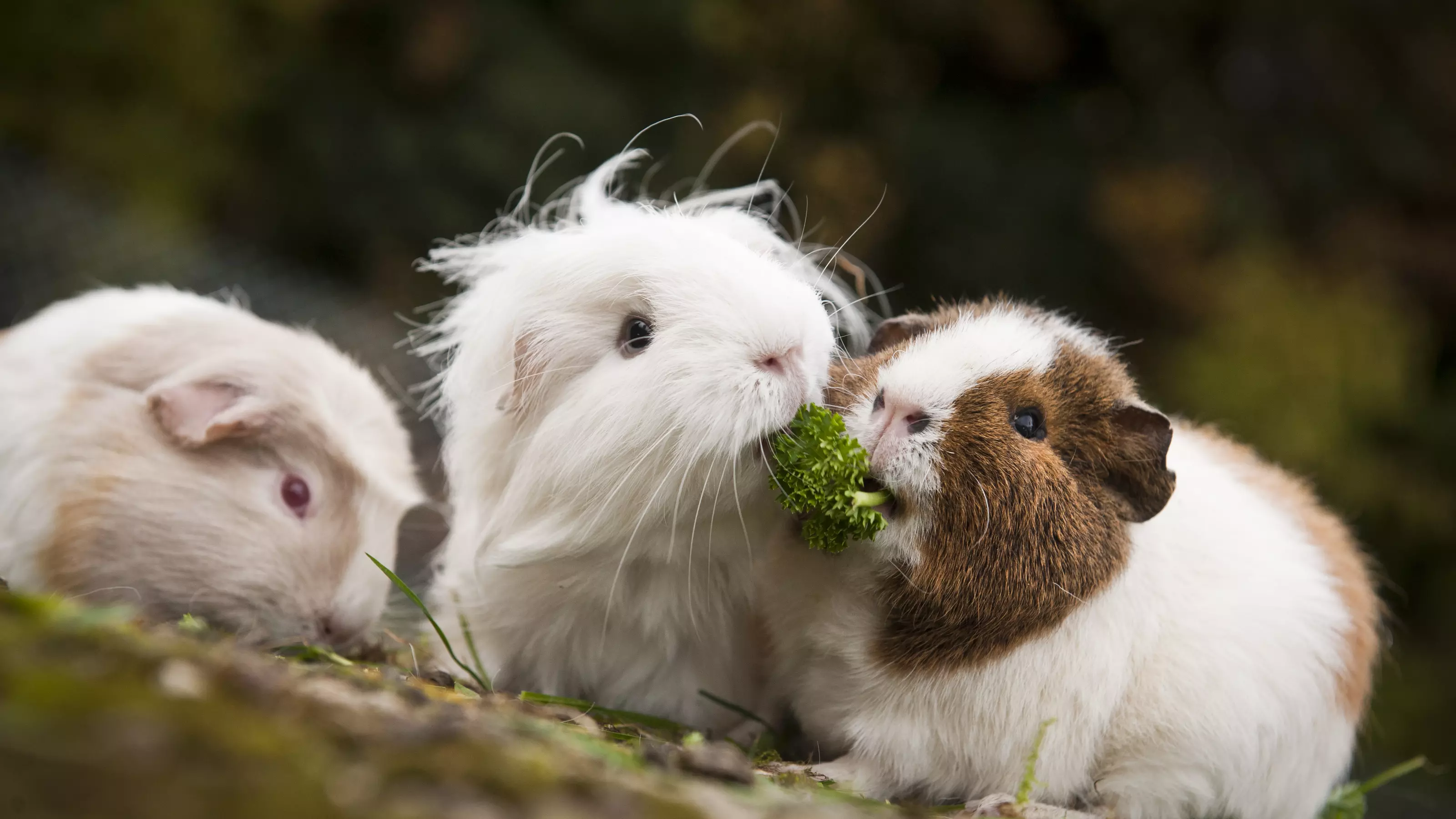
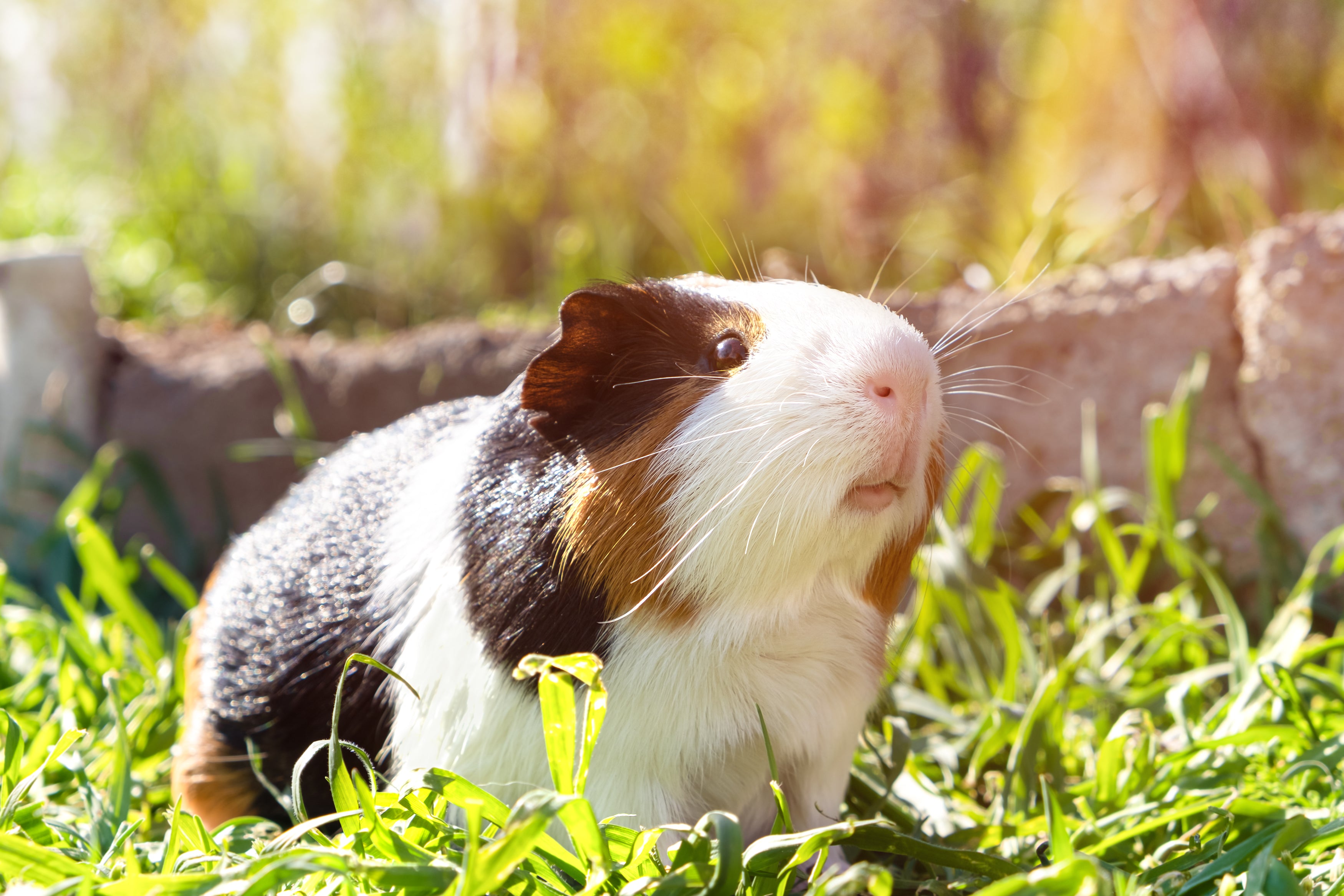




No comments:
Post a Comment
Note: Only a member of this blog may post a comment.